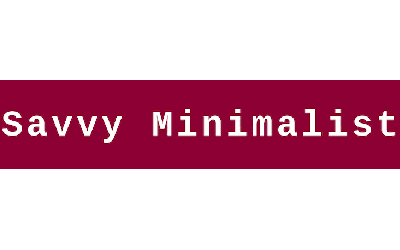Planning affordable meals is a powerful tool for managing your time, health, and budget. By trying a minimalist approach to meal planning, you can create delicious, nutritious meals without the stress and expense often associated with cooking. Here are some simple and effective strategies for planning meals that are both affordable and minimalistic.
1. Prioritize Simplicity
Simplicity is at the heart of minimalist meal planning. Focus on basic, wholesome ingredients that can be used in multiple dishes. Here’s how:
- Choose Versatile Ingredients: Opt for ingredients that are versatile and can be used in various meals. Items like rice, pasta, beans, eggs, chicken, and vegetables are great staples.
- Limit Ingredients: Aim for recipes with a short list of ingredients. This not only makes cooking easier but also reduces your grocery bill.
2. Plan Your Meals Weekly
Planning your meals in advance helps you stay organized and minimizes food waste. Here’s a simple approach:
- Create a Weekly Menu: Take some time each week to plan your meals. Include breakfast, lunch, dinner, and snacks. This helps you know exactly what you need and prevents impulse buys.
- Theme Nights: Assign specific themes to each day of the week, such as Meatless Monday, Taco Tuesday, or Pasta Friday. This adds variety while keeping planning simple.
3. Make a Detailed Shopping List
A well-prepared shopping list is essential for sticking to your budget and avoiding unnecessary purchases. Here’s how to create one:
- List by Category: Organize your shopping list by categories like produce, dairy, grains, and proteins. This makes shopping quicker and ensures you don’t miss anything.
- Stick to the List: Only buy what’s on your list to avoid overspending and accumulating excess food.
4. Cook in Batches
Batch cooking is a fantastic way to save time and money. It involves preparing large quantities of food at once and then storing portions for later use. Here’s how to get started:
- Double Recipes: When cooking, double the recipe and freeze half for future meals. This works well for soups, stews, casseroles, and pasta dishes.
- Prepare Ingredients in Bulk: Cook large batches of grains, beans, or proteins that can be used in various meals throughout the week.
5. Utilize Leftovers
Making the most of leftovers is a cornerstone of minimalist meal planning. Here’s how to repurpose them creatively:
- Plan for Leftovers: Designate certain meals that use up leftovers from previous nights. For example, use roasted chicken for sandwiches or salads the next day.
- Transform Leftovers: Get creative with leftovers. Turn a vegetable stir-fry into a wrap or use cooked pasta in a frittata.
6. Embrace Simple Recipes
Simple recipes are easier to prepare and often require fewer ingredients. Here are some ideas:
- One-Pot Meals: One-pot meals like stews, chilis, and casseroles are convenient and minimize cleanup.
- Sheet Pan Dinners: Roast a variety of vegetables and proteins on a single sheet pan for an easy, balanced meal.
7. Shop Seasonally and Locally
Seasonal and local produce is often fresher and more affordable. Here’s how to incorporate it into your meal planning:
- Visit Farmers Markets: Local farmers markets can be a great source of fresh, seasonal produce.
- Seasonal Menus: Base your meal plans on what’s in season. Seasonal produce not only tastes better but can also be cheaper.
8. Minimize Processed Foods
Processed foods are often more expensive and less healthy than whole foods. Here’s how to minimize their use:
- Whole Foods Focus: Base your meals around whole foods like fruits, vegetables, grains, and proteins.
- Homemade Alternatives: Make your own versions of processed foods. For example, prepare homemade salad dressings, granola, and snacks.
9. Keep a Stocked Pantry
A well-stocked pantry with basic ingredients can help you whip up meals quickly without extra shopping trips. Here’s what to keep on hand:
- Pantry Staples: Stock items like rice, pasta, canned beans, tomatoes, spices, and oils. These can form the base of many meals.
- Long-Lasting Produce: Keep long-lasting produce like onions, potatoes, carrots, and garlic, which are versatile and durable.
Conclusion
Minimalist meal planning is about embracing simplicity, reducing waste, and saving money while enjoying delicious, nutritious meals. By prioritizing these versatile ingredients, planning ahead, and making the most of leftovers, you can create a stress-free affordable meals. Remember, the goal is to streamline your cooking process and focus on quality over quantity, making mealtime an enjoyable and sustainable part of your life.

